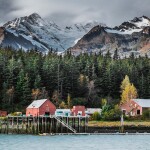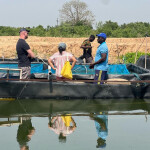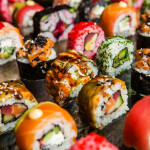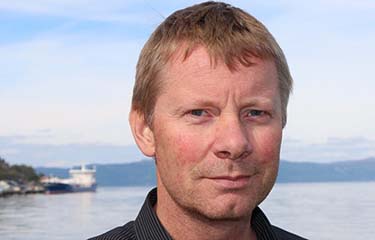Iceland will never be the biggest salmon producer in the world, but the fast-emerging industry could prove be a very valuable new economic pillar for the country within the next decade, according to two of its leading farming companies.
Speaking at the 2023 North Atlantic Seafood Forum (NASF), Icelandic Salmon CEO Björn Hembre said 2022 was the year in which salmon farming proved itself as a concept in Iceland. Net-pen salmon farming has become the main driver of aquaculture growth in Iceland in recent years, with overall farmed production growing at a compound annual growth rate (CAGR) of 30 percent since 2015, Hembre said.
Total production is expected to exceed 60,000 metric tons (MT) in 2023, he said, making its fish-farming sector one of the fastest-growing globally.
Iceland’s aquaculture industry is benefiting from a “strong fishing heritage” and a “highly developed local seafood industry,” Hembre said. Continued growth is vital for the industry to ensure the development of a support network of logistics and service providers, so that importers can be assured of a regular supply of product.
“If we are to expect a premium price for our products, we have to be [sending them to market] every week, and we are not there yet,” he said.
Icelandic Salmon, which is the sole owner and parent company of Arnarlax, and which is itself owned by SalMar, expects to harvest 16,000 MT of salmon this year, all of which will be certified to the Aquaculture Stewardship Council (ASC) standard. The company conducts farming at seven sites in three fjords and has a total maximum allowable biomass (MAB) of 23,700 MT.
Citing data recently compiled by the Boston Consulting Group (BCG) for the Icelandic Ministry of Fisheries, Hembre said the country’s salmon production in sea cages is projected to grow from 45,000 MT in 2022 to between 94,000 MT and 234,000 MT by 2032. The industry is moving toward widespread adoption of the use of larger smolt, and is working to better utilize its MABs, Hembre said. Additionally, the Iceland Ministry of Fisheries is expected to deliver a draft policy for aquaculture industry development in September 2023 and to submit a comprehensive aquaculture-development bill to parliament in 2024.
“[Growth] is dependent on political will,” Hembre said.
Hembre said the industry’s growth is helped by …
Photo courtesy of Arnarlax








